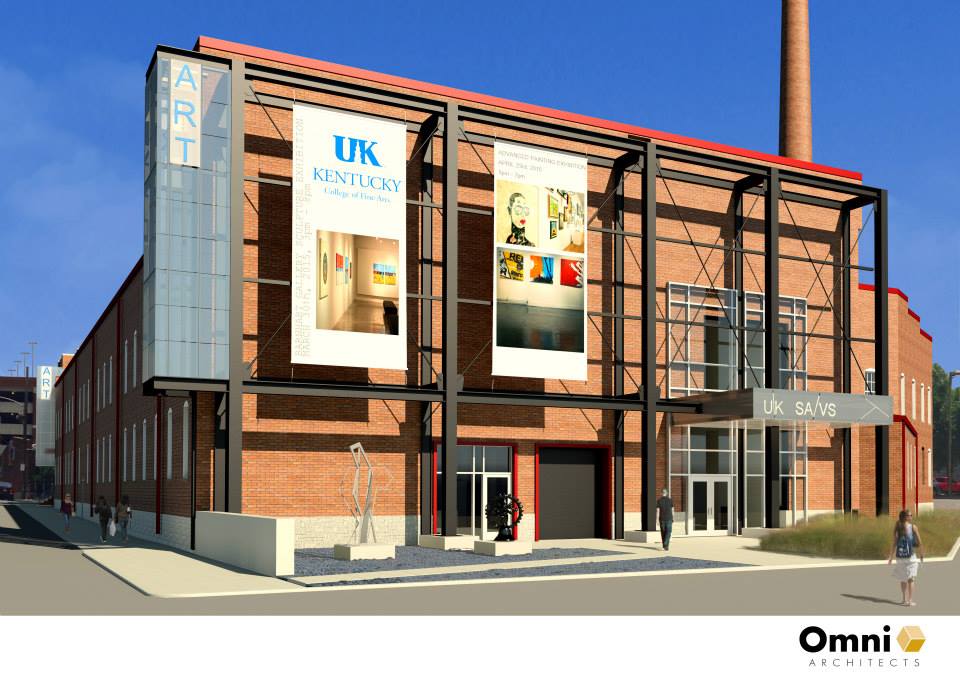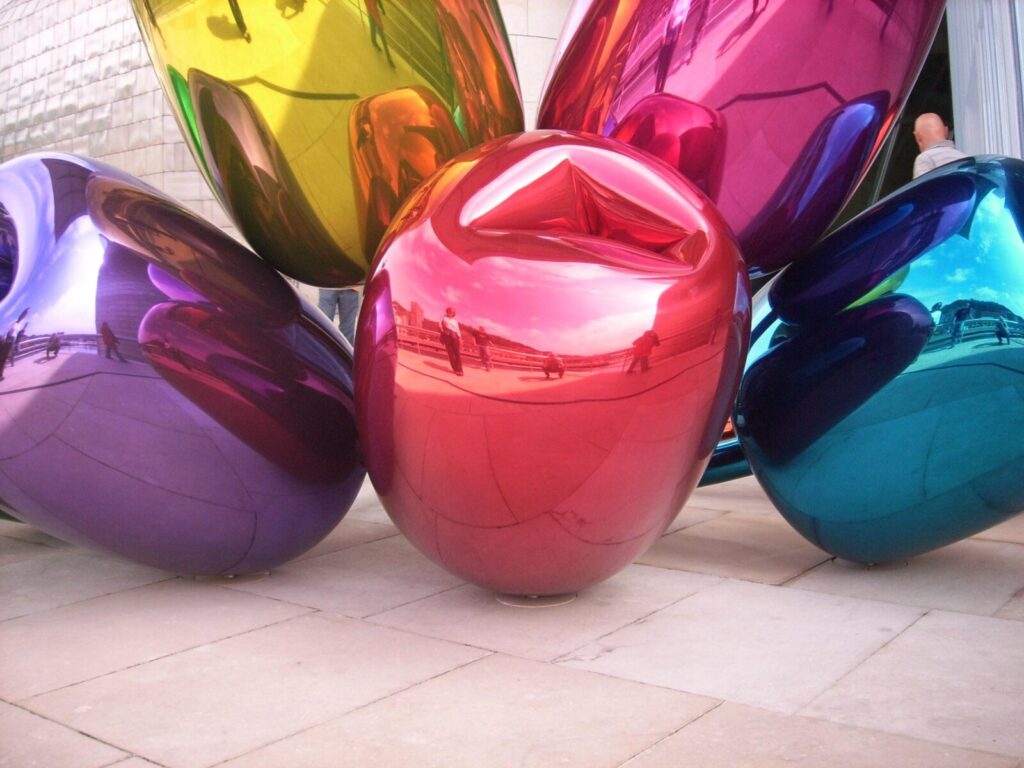The School of Art and Visual Studies (SA/VS) at the University of Kentucky is going through an exciting, transformational period driven, in part, by its anticipated move to a new home in a completely renovated facility on Bolivar Street. In addition, Stuart Horodner, Artistic Director of the Atlanta Contemporary Art Center, has just been named as Museum Director of the UK Art Museum after an extensive national search.
UnderMain’s Art Shechet asked Robert Jensen, Ph.D., Director of SA/VS to join us in a conversation about what we can expect from the new facility, how programs at UK will be impacted, and the potential benefits of the move for the larger Lexington community. We also wanted to have a look into what we might expect from the changes at the Art Museum. Dr. Jensen discussed with UnderMain other issues of importance to UnderMain’s readers, like the much-suggested idea of a major Lexington art museum.
In the first part of the Interview Jensen discussed the new building that will become the home for SA/VS in 2015 (https://undermain.art/arts/big-changes-a-conversation-with-robert-jensen-director-of-the-uk-school-of-art-and-visual-studies/). The second and final part of the interview explores some of the changes we might anticipate with the change at the top at the UK Art Museum, and Jensen’s thoughts about a Lexington art museum, and critical review.

UM: The search for a new Director for the UK Art Museum just concluded with the hiring of Stuart Horodner, the artistic director of the Atlanta Contemporary Art Center.  What vision for the Art Museum guided the search process?
Jensen: I was not on the search committee, so I can’t speak to the “vision†that guided the search. But I’m fairly ecstatic that Stuart was hired for this position. He has broad and deep connections with the international contemporary art world. How this will affect the museum’s programming remains to be seen. But I hope that the UK Art Museum will join institutions like the Lexington Art League to expose audiences for art in Lexington to the many strands of contemporary art. And as someone who finds contemporary art fascinating, entertaining and occasionally transcendent, I’m looking forward to what Stuart can bring to the job. That being said, I’m sure he will be respectful of the many other aspects of the museum’s mission, from serving K-12 children to providing programming for those adult audiences with more conventional tastes in art. I am really looking forward to working with him.
UM:Â Of course, the new director has not begun his work at the museum, but what are some of the changes we might expect to see take shape in the relationship between the museum and the university community, and between the museum and the larger Lexington community?
Jensen: We often speak on campus at UK about the dangers of being siloed, of paying attention only to our individual programs without regard to what’s happening elsewhere in the university. Under our new Provost Christine Riordan and our relatively new President Eli Capilouto, collaboration and interdisciplinary work are the new bywords under which UK hopes to operate. I think that is what we can also expect from Stuart. I think he is going to want to integrate the Art Museum much more thoroughly into the academic mission of the university than his predecessors have, and I think he is going to reach out to the local artist community and arts organizations in a way that the Art Museum has never done. I am very optimistic about the positive impact Stuart and the Art Museum will have on the exhibition and appreciation for the visual arts in the Lexington community.
UM: Since we are on the subject of museums, there has been lots of discussion over the past several years about Lexington needing a significant independent art museum.  I am interested in your thoughts as to whether that is a realistic proposition and how the conversation about the merit, or lack of merit of this proposition can be facilitated.
Jensen: I don’t think most people really understand how expensive art museums are. They might imagine that just building a building is the principal task of a fundraising campaign. But an art museum is pretty much the same proposition as saying that the city needs to build a new concert hall/theatre. Sure it would be great to have. But even if the money were found to get the building built, who underwrites the labor costs of the technicians and the house administrative expenses involved in every concert, ballet or theatrical production? Local arts organizations don’t have the money generally to meet these costs without raising the ticket price point much higher than the already modest public attendance at these events would bear. Similarly, paying staff salaries, keeping the lights on, these are big ticket and unglamorous line items. Creating exhibitions and hosting traveling exhibitions are very expensive propositions. And we haven’t yet begun to talk about what is to go into such a museum.

Important contemporary art, for example, is unbelievably expensive. Collectors today are often paying more for a Jeff Koons than they are for a Claude Monet. While there are local collectors with interesting collections all these collections combined, were they to be given in one great gift, would hardly suffice to fill out a museum collection of any real significance. Lexingtonians would no doubt love to have a second Speed Museum in town, but I just don’t see this happening. I think the UK Art Museum, which does have an interesting collection, will continue to be the city’s primary museum. Now if we could find an off-campus location for it, and a significant recurring budget to support the new venue, that would be a great thing. But it will take a great deal of money to pull off.
[SlideDeck2 id=2156 ress=1]
UM: Finally, one of UnderMain’s core missions is to publish critical reviews of the visual arts.  What do you think are the most important elements of an outstanding critical review?
Jensen: Art critics often remind me of the fashion mavens who comment on the runway dresses at the Academy Awards. Every dress is wonderful until it’s not. These commentators are very good at saying what is possible in the fashion industry at a given moment. In the art industry it is much the same. Most good criticism is able to identify what is possible at a given moment. Art, which obeys its own fashion laws, needs that kind of criticism and it typically comes from writers who are contemporaries or near contemporaries of the artists whose work they’re writing about or who are themselves artists. What is far more rare, in both fashion and art criticism, are those writers who are able to say why something is possible, not only what. I am not saying that such critical writing has the ability to understand individual works of art better than the ordinary art lover. In my view, the contemporary artworks that are internationally celebrated are also extremely accessible to anyone with a decent knowledge of recent art history, an open mind, and a willingness to engage with the art. Art today doesn’t require a priest caste of art aesthetes to interpret the holy creations of artists. But to explain why something is possible requires a broader perspective. It is why I always have loved the art criticism of the philosopher Arthur Danto. He comes to works of art with an open mind, always asking why something is possible as art. And the recently deceased British critic David Sylvester is my favorite interviewer of artists, because Sylvester was always interested in how artists got their ideas, how they worked, and why. It is surprising to me how few interviewers ask artists about their working methods and sources of information in any sort of serious, sustained way. Good criticism does not talk down to the reader nor hide behind the fashionable jargon of the day. If the goal is not to be understood, what is the point of writing? (Hyperlinks added by UnderMain)
– Art Shechet




